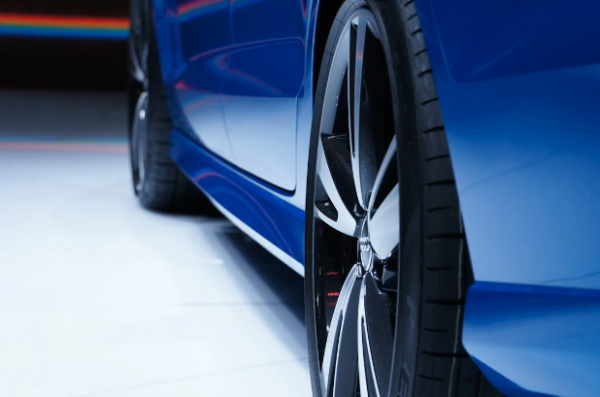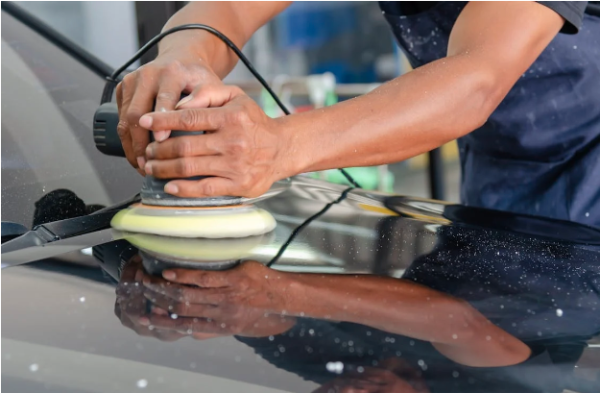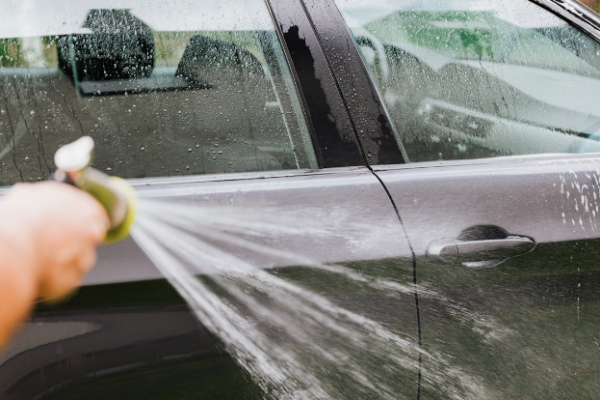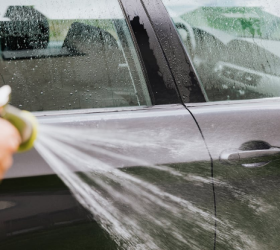More than just an aesthetic choice, protecting your car’s paint job can be essential for prolonging your vehicle’s lifespan. After all, the paint is in part what protects the metal panels that make up the body of the car, and without the paint, corrosion can take hold instead. Of course, it’s also an aesthetic factor, and who doesn’t want their vehicle to look good? As such, we’re going to look at what you should keep in mind about protecting your paint job, especially if you’ve only just had it applied.

Make sure that you wash it regularly
The single best way to ensure that your car’s paint job remains as comprehensive and complete as possible is to wash your car on a regular basis. If you’re washing it by hand, then make sure that you do it with a wash mitt, rather than any old cloth. If you do use a cloth, then make it a microfibre cloth, which is non-abrasive, but also better at absorbing water and picking up dirt from smooth surfaces. Be careful of what automotive soaps you use, and wash it in straight lines, rather than circular motions, before rinsing it with clean water. Make sure that you have two buckets, too, one for washing off your cloth/mitt, and the other for applying clean water to it, instead.
Be sure to wax it, as well
You should wash your car roughly once a week to make sure that no dirt or debris is sticking too harshly to it. You don’t need to wax your car quite as often as that, but if you want to help it maintain its shine and offer the paint more protection, then you should. Every time you wash your car, look at how water beads on it. If it forms beads that are smaller than a ten-pence piece, then the wax is working effectively. If the beads start to join together in long lines or sheets, then the surface tension of the car has changed, which is usually due to the wax wearing away. Waxing your car is best done with the right equipment, like an applicator pad.
Avoid washing it too harshly
There are times when you’re going to want to give your car a more thorough wash than you can by hand. At those times, you have options like an automatic car wash, sandblasting, or chemical washing. However, each of these options can actually be a lot more abrasive to your vehicle than you think. There are alternatives, however, like ice blasting, which doesn’t use any corrosive materials like sand or chemicals and doesn’t rely on equipment like hard brushes (which often aren’t cleaned after every wash.) Whatever method you use, think about how it might affect your paint job, do your research, and choose one that’s effective but doesn’t apply more force than is necessary.

Protect it from overhead menaces
There are some kinds of messes that are annoying and have to be cleaned off the next time you wash your car, but there are some that are particularly bad for your paint, and should be prevented, or at least washed off as soon as possible. Bird droppings (and other animal droppings) fall into the latter category. Aside from how quickly they can stick stubbornly to your car, droppings are genuinely corrosive. “Honeydew,” which is that algae-like film that typically starts clinging to the car in spring can be just as corrosive and is actually aphid droppings. As such, your best bet is to get a protective cover for your car to prevent either from reaching it.
Be mindful of paint protection products
There are a lot of dealers who will offer to put a paint protection product on your car when selling it, or car paint providers who will do much the same thing. There are a lot of these cropping up lately, and they are often promoted as so effective that you don’t have to do any paint care, yourself. While paint protection products can, indeed, be effective in keeping your paint job in good condition, they do not take away the need for care, such as washing, waxing, and keeping it out of harm’s way. As such, you can pay extra for these, if you want, but just make sure that your expectations are realistic when you do.
Don’t leave it out in the sun for too long
While it might sound like hyperbole, the truth is that leaving your car out in the sun for too long, when it’s shining down strongly, can do more damage than you might think. The UV rays of the sun can begin to cause the paint of the car to fade and oxidize, which can quickly cause the car to lose its shine. The sun can do even more damage to the interior of the car, as well, which can cause fabrics to become faded, leather to begin to crack and, on particularly hot days, can even cause problems with the electrics. You should always be mindful of what you keep in your car on sunny days, as well, as the extreme heat can affect them.

The right way to take care of scratches
As much as you might try to protect, scratches do happen. As infuriating as they can be, a single scratch does not mean that you have to get a whole new paint job. First of all, wash, wax, and polish your car. Some scratches may disappear, at least visibly, in the process. If that doesn’t happen, then you might want to see if a paint pen or a spray can may help cover up the scratch. Make sure that you get the exact colour code for your vehicle’s paint job. If that doesn’t help, ask a car paint specialist what they recommend.
Wear and tear can affect any car and, at some point, you’re going to need a new paint job for your vehicle. However, with the tips above, you can put that day off for as long as possible.


.gif?rand=1632)








